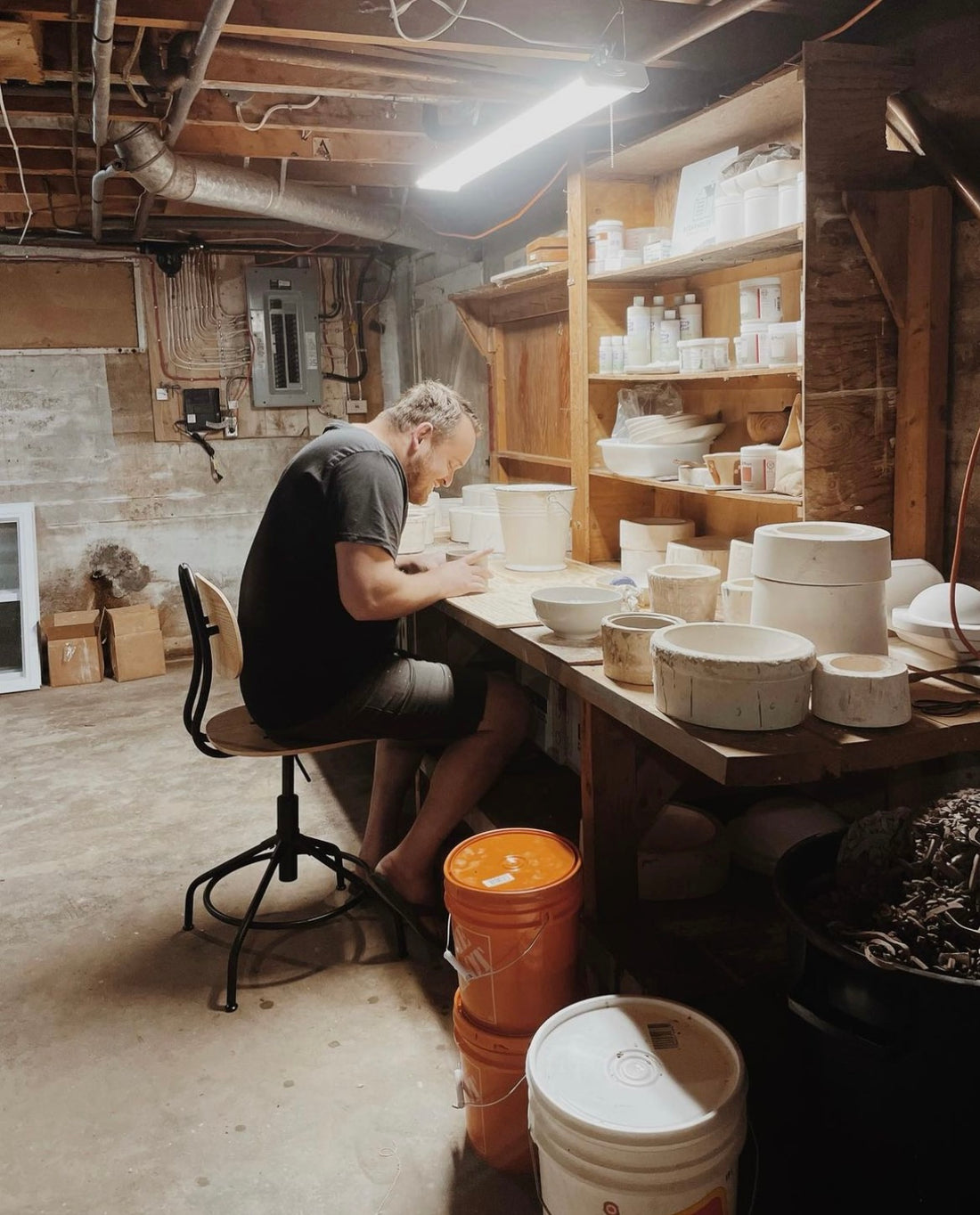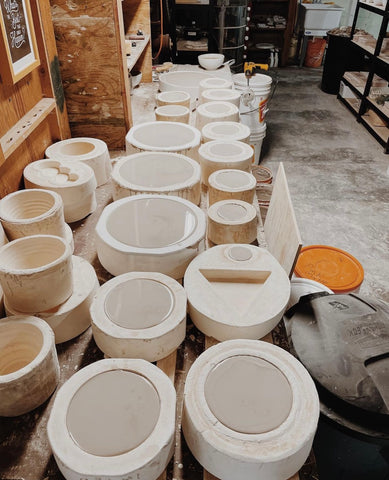
The Art of Slip Casting
Brett BashawShare
When Natasha and I started our little ceramics business one of the first things we did was to buy a slab roller. We had decided that we would focus on hand building our mugs from slabs rather than throwing them on a wheel as neither of us wanted to spend all of our time hunched over a pottery wheel. Of course, we have certainly created and sold a ton of wheel thrown pieces, but we decided early on to focus on hand building as we felt we could gain more size consistency and sitting at a table together hand building mugs just sounded a lot more fun.
 As our business has grown we have often run into the reality that we are only two people and can thus only make a limited number of pieces either on a wheel or a through building with slabs. We realized that if we were truly going to grow our pottery business that we had to incorporate slip casting into our making process. But in order to do this we first had to learn the art of slip casting, you heard that right, the art of slip casting.
As our business has grown we have often run into the reality that we are only two people and can thus only make a limited number of pieces either on a wheel or a through building with slabs. We realized that if we were truly going to grow our pottery business that we had to incorporate slip casting into our making process. But in order to do this we first had to learn the art of slip casting, you heard that right, the art of slip casting.
Some people may have the misconception that making pottery from molds and slip is cheating or so easy that the pieces practically make themselves. The truth is that for a teeny tiny ceramics business like ours, slip casting is our only path towards increasing our production while also maintaining the handmade nature of our pieces. Our culture, unfortunately, puts out this idea that artists and makers should always struggle, that their arts based business should always be something that they do on the side, and not really their "actual job". Whenever I tell people what I do for living, that I am a potter, I am often met with surprise when I go on to explain that it is our only source of income and I think this is a problem in our society. Unfortunately the idea of the "starving artist" is still something that keeps many artists from doing their art for a living. Limiting ideas about how handmade pottery can never be aided by efficiencies and techniques such as slip casting is yet one more constraint holding artists and makers back from sustainability & profitability. We now have around twenty or so slip casting molds in heavy rotation around here and I am so thankful for what they have brought to our business. Some of our molds are easier to work with than others and occasionally we create a mold that doesn't even work correctly, but the trial and error involved in getting to a good slip casting mold is always worth the effort.

Our slip casting molds enable me to pour and thus create well over twenty (this number can always increase) consistent pieces in only a few minutes. Of course those minutes eventually turn into hours as most of the work involved in the art of slip casting (after you have achieved quality molds) is trimming and fettling all of your slip casted pieces after they have achieved leather hard consistency. I am just one person and yet I am now able to fill up our basement shelves in a relatively short amount of time with bisque ware ready to be waxed and glazed by myself and the rest of the team. When we combine our slip casted pieces with all of our slab built pieces we’re then able to stock our online pottery shop in a way that enables us to pay ourselves as well as our two employees. In short we've gradually set ourselves up to be a profitable and sustainable arts based business.

Take for instance the photo above. These are a new collaboration with our highly talented studio assistant and resident sculpture artist Amber West. It took Amber hours upon hours to hand carve the original sculptures we used to create the mold we used to make the pieces you see above. Even after they are cast Amber still spends extra time trimming, fettling, and adding extra details to each slip casted piece. If it wasn’t for the efficiency of slip casting we simply wouldn’t be able to produce and sell pieces like the ones you see above as the labor involved in carving each piece from scratch just wouldn’t make it possible.
We've been running our ceramics business for around five years now and the art of slip casting, with its limitless possibilities for creativity and growth, has me believing that we'll be around for many years to come


1 comment
Beautiful! Thank you for sharing your work – I totally agree that it’s an art unto itself and I’m glad to see your words to fight the “starving artist” stereotype. It’s absolutely time to lose that narrative and create a new one: artists can survive and thrive, even while keeping the handmade nature of their pieces through methods like this one!
- SKP